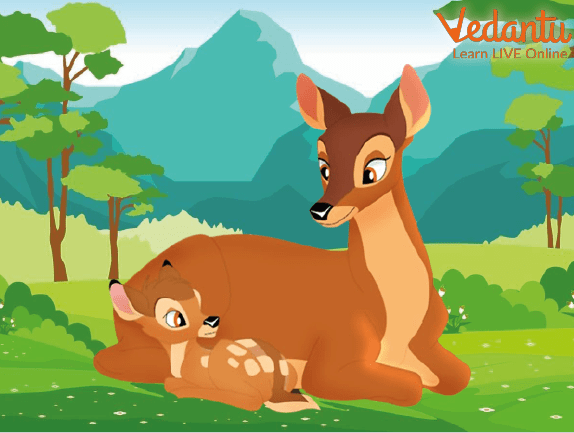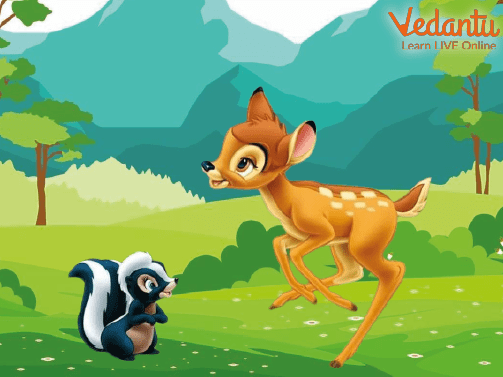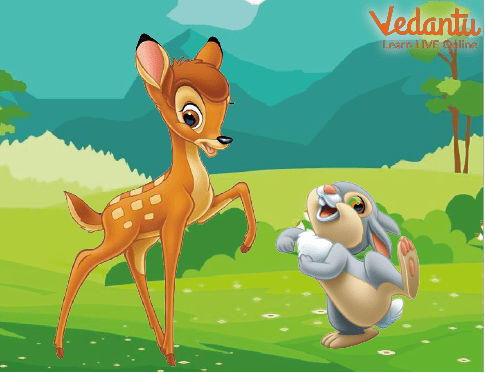Bambi Story

Author of Bambi Story
Felix Salten's Bambi, a Life in the Woods is a coming-of-age story published in Austria in 1923. The book, regarded as a classic and one of the first environmental novels, was well-received by critics.
Walt Disney Productions turned it into the theatrical animated picture Bambi in 1942, as well as two live-action Russian versions in 1985 and 1986, ballet in 1987, and stage performance in 1998. A different ballet version was made by a company in Oregon, but it was never performed. A children's picture book adaptation by Janet Schulman was released in 2000 and included much of Salten's original text and realism oil paintings.
Bambi Story for Kids
This is the Disney character Bambi's brief narrative. There once was a forest where several creatures coexisted peacefully. They were all great friends and enjoyed a really special relationship.

Bambi and Her Mother
One morning, Tambor the rabbit went to wake up the owl so that he might see the newborn. The animals gathered to greet Bambi, the young fawn that the woodland had recently welcomed!
Everyone grew close to him and began teaching him the names of all the creatures and showed him everything in the forest, including the flowers and rivers. They gathered in the clearing each day to play and study.
Bambi's mother brought him to meet his father, the leader of the herd of deer, one morning. He had the task of taking care of the remaining deer.
Bambi heard hounds barking as he and his father took a leisurely stroll in the woodland. To save him, his father yelled, "Run, Bambi, run!" But why, Bambi whimpered, "Father?" "It's the humans, and every time they go into the woods, they attempt to hunt us down".
A few days following this encounter with the humans, Bambi's father taught him all he needed to know to lead the herd when the time came. Then Bambi encountered a really attractive deer, and they had fallen in love right away.
They were playing together one day when they overheard dogs barking. Bambi pondered in his head, "Oh, no! It's the people!" and he made an effort to locate shelter. By the time he came up with a solution, the dogs were so near that he had no choice but to step between his mate and them to save her. Bambi attempted to save himself and flee the hounds when she was secure.

Bambi and the Squirrel
When he thought he was free, he arrived at a cliff and had to leap. Bambi was hurt as he fell and hit the water after the hunters' bullets missed him. His father and his herd arrived at that time to assist him in crossing the river. They would no longer be in human danger after they had crossed the river. After they crossed, they attended to Bambi's injuries, and he recovered quickly.
As time passed, our hero Bambi grew up and turned into a large buck. When he went to visit his friends, they had a hard time recognizing him because he had changed so dramatically.
He even now possessed impressively large antlers. The owl was at this time elderly and smart, Tambor was married to a little rabbit, and they produced three young rabbits.

Bambi and the Rabbit
Bambi and his mate had a fawn after they were married. When Bambi was younger, his infant did what he used to do. Like Bambi did when he was younger, the newborn deer went to meet all the woodland creatures.
Bambi was now in charge of the herd, and everyone lived happily ever after, similar to how his father before aging was. Likewise past the point of being able to care for others. Bambi was now responsible for maintaining the woodland.
Summary
A baby deer named Bambi explores his woodland home with his new companions, a rabbit and a skunk whose name was Flower, in this timeless Disney tale. When he was a child, he was taught by his adoring mother and his father, The Great Prince of the Forest, that there are hazards in the wide meadows where hunters might detect the animals. He also meets a stunning young doe named Faline. As Bambi grows up, he discovers that in his woodland home and on the road to adulthood, there is a tragedy in addition to beauty and joy.


FAQs on Bambi Story
1. What message does the story give us?
Disney's earliest and most well-known ecological picture, Bambi, depicted the ecology and organisation of animal life; yet, the public did not generally like this part of the film. A large portion of the movie suggests that it is impossible for people and the environment to coexist happily because it paints man as destructive. In the movie, the hunters are shown as the irresponsible and perilous ones who kill Bambi's mother and set the forest on fire.
2. When was Bambi released as a film?
Bambi, Disney's sixth full-length motion picture, was released on August 21, 1942, during the Second World War. The movie opposes and condemns violence as a reflection of the time. Bambi defies the standard of war and warfare by displaying the devastating consequences of death and loss in an era of widespread devastation and rising daily death tolls. Unfortunately, the movie did not have much success because of how much time and effort were spent on the war at the time, and it ended up losing money until it was re-released in 1947.




